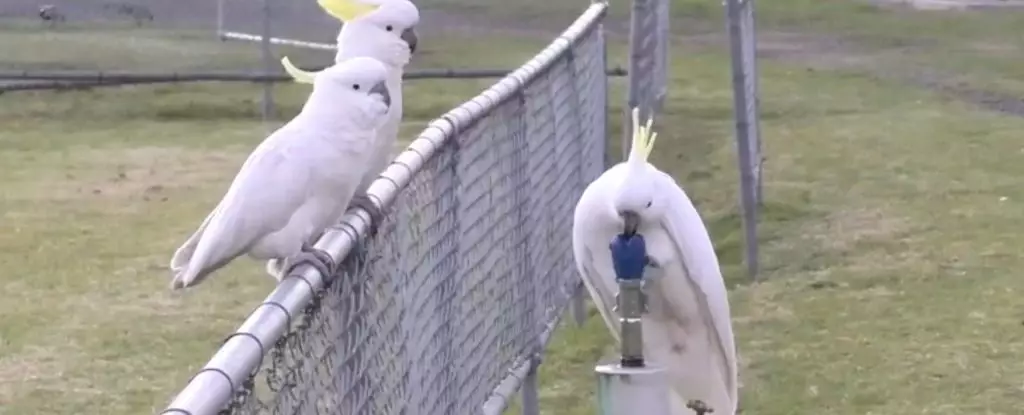In the bustling suburban landscapes of Western Sydney, the sulfur-crested cockatoo (Cacatua galerita) is emerging as an emblem of resourcefulness and ingenuity. These birds, known for their striking plumage and raucous calls, have taken their intelligence to new heights—literally and figuratively—by mastering the mechanics of water fountains. This remarkable ability exemplifies not only their adaptability but also offers profound insights into avian social learning and urban wildlife behavior.
Recent observations revealed that these parrots are no longer content with their natural habitats; they actively manipulate public resources for hydration. Formerly known for their cunning tactics to raid rubbish bins, the evolution of their behavior signals a growing trend where these feathered intellects play a significant role in their ecological system. The work of Barbara Klump and her research team, who installed motion-sensitive cameras to capture these intricate rituals, underscores the innovative spirit of these birds and invites us to rethink how we interpret intelligence in non-human species.
Behaviors Beyond Instinct: The Art of Problem Solving
The methodology that these cockatoos exhibit to access water from fountains is undeniably complex. This isn’t mere animal instinct at play; rather, it’s a blend of critical thinking and learning through observation. Over a span of 44 days, their attempts at drinking from the fountains—which included using their feet, bills, and even their body weight—culminated in a stunning success rate of 41%. Such a calculated approach speaks volumes about their cognitive abilities.
The observation of these behaviors extends beyond mere survival; it indicates a burgeoning social structure among the local cockatoo population. With their penchant for queuing up during peak hours, these birds seem to engage in what can only be described as an impromptu social event, akin to waiting in line for a favorite food truck. It challenges our preconceived notions about animal behavior and promotes a greater appreciation for their social interactions.
Urban Wildlife Adaptation: The Broader Implications
The adaptability of the sulfur-crested cockatoos raises significant questions about how urbanization influences wildlife behavior. Initially, one might assume that drinking fountains would only be utilized during sweltering heat. However, these birds have taken a liking to this convenience that extends beyond mere necessity; it hints at preferences and potentially a richer sensory experience associated with their drinking source.
By incorporating human-made features into their daily life, the cockatoos exemplify a remarkable level of adaptability that could set precedent for future wildlife interactions in urban spaces. The fact that this behavior appears to be spreading suggests that the cockatoos are not only learning but also teaching one another—an echo of cultural transmission. Thus, their antics challenge urban planners and wildlife conservationists alike to reassess how public spaces can be conducive to coexistence with intelligent avian populations.
In observing these clever cockatoos, we witness not just the charm of their antics but also an urgent call to recognize the importance of adaptability in an ever-changing world—a superb reflection of resilience found in nature.

